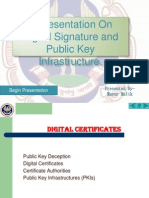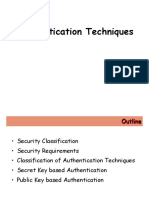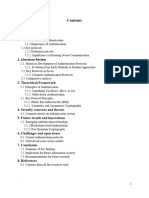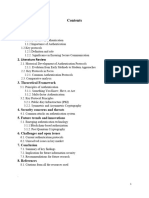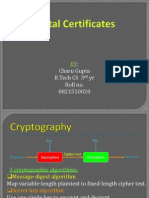0% found this document useful (0 votes)
11 views21 pagesCrypto Report
This document provides a comprehensive overview of Certificate-Based and Biometric Authentication, detailing their definitions, advantages, challenges, and real-world applications. It also compares the two methods in terms of security, usability, scalability, and cost, while discussing hybrid authentication systems and future trends in authentication technologies. The report emphasizes the importance of robust authentication mechanisms in enhancing network security amidst rising cyber threats.
Uploaded by
ayanvaaiCopyright
© © All Rights Reserved
We take content rights seriously. If you suspect this is your content, claim it here.
Available Formats
Download as PDF, TXT or read online on Scribd
0% found this document useful (0 votes)
11 views21 pagesCrypto Report
This document provides a comprehensive overview of Certificate-Based and Biometric Authentication, detailing their definitions, advantages, challenges, and real-world applications. It also compares the two methods in terms of security, usability, scalability, and cost, while discussing hybrid authentication systems and future trends in authentication technologies. The report emphasizes the importance of robust authentication mechanisms in enhancing network security amidst rising cyber threats.
Uploaded by
ayanvaaiCopyright
© © All Rights Reserved
We take content rights seriously. If you suspect this is your content, claim it here.
Available Formats
Download as PDF, TXT or read online on Scribd
/ 21







































